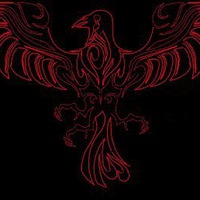
Какие силы сохранились у власти в большинстве европейских стран в 1990-ые годы?
 0
0
 0
0
Ответы на вопрос
 Внимание! Ответы на вопросы дают живые люди. Они могут содержать ошибочную информацию, заблуждения, а также ответы могут быть сгенерированы нейросетями. Будьте внимательны. Если вы уверены, что ответ неверный, нажмите кнопку "Пожаловаться" под ответом.
Внимание! Ответы на вопросы дают живые люди. Они могут содержать ошибочную информацию, заблуждения, а также ответы могут быть сгенерированы нейросетями. Будьте внимательны. Если вы уверены, что ответ неверный, нажмите кнопку "Пожаловаться" под ответом.

Ответ:
Консервативные силы Остались у власти в большинстве стран Европы
 0
0
 0
0

Political Forces in European Countries in the 1990s
In the 1990s, following the end of the Cold War and the collapse of the Soviet Union, several European countries experienced significant political changes. While the specific political forces in each country varied, there were some common trends across the continent.
1. Western European Countries: In Western Europe, many countries maintained stable political systems with established political parties. Some of the major political forces that remained in power in Western European countries during the 1990s include:
- Social Democratic Parties: Social democratic parties, such as the Labour Party in the United Kingdom, the Social Democratic Party in Germany, and the Socialist Party in France, continued to have a significant presence in Western European politics. - Conservative Parties: Conservative parties, such as the Christian Democratic Union in Germany, the Conservative Party in the United Kingdom, and the Gaullist Rally for the Republic in France, also held power in several Western European countries. - Liberal Parties: Liberal parties, such as the Liberal Democrats in the United Kingdom and the Free Democratic Party in Germany, were influential in some countries.
2. Eastern European Countries: In Eastern Europe, the 1990s marked a period of transition from communist rule to democracy. The political landscape in these countries was more fluid, with new political forces emerging alongside remnants of the old regime. Some of the major political forces that emerged or remained in power in Eastern European countries during the 1990s include:
- Former Communist Parties: In some Eastern European countries, the former communist parties transformed themselves into social democratic or socialist parties and continued to play a significant role in politics. Examples include the Social Democratic Party of Germany and the Party of the Democratic Left in Poland. - Nationalist Parties: Nationalist parties gained popularity in several Eastern European countries during the 1990s. These parties often advocated for national sovereignty, cultural preservation, and protection of national interests. Examples include the Hungarian Democratic Forum in Hungary and the Serbian Radical Party in Serbia. - Liberal and Reformist Parties: Liberal and reformist parties emerged in many Eastern European countries, advocating for market-oriented economic reforms and democratic governance. Examples include the Civic Democratic Party in the Czech Republic and the Democratic Party in Romania.
It is important to note that the political landscape in European countries during the 1990s was dynamic, with political forces evolving and changing over time. The specific composition of political forces in each country varied depending on historical, cultural, and socio-economic factors.
 0
0
 0
0
Похожие вопросы

Топ вопросов за вчера в категории История
Последние заданные вопросы в категории История
-
Математика
-
Литература
-
Алгебра
-
Русский язык
-
Геометрия
-
Английский язык
-
Химия
-
Физика
-
Биология
-
Другие предметы
-
История
-
Обществознание
-
Окружающий мир
-
География
-
Українська мова
-
Информатика
-
Українська література
-
Қазақ тiлi
-
Экономика
-
Музыка
-
Право
-
Беларуская мова
-
Французский язык
-
Немецкий язык
-
МХК
-
ОБЖ
-
Психология
-
Физкультура и спорт
-
Астрономия
-
Кыргыз тили
-
Оʻzbek tili






















